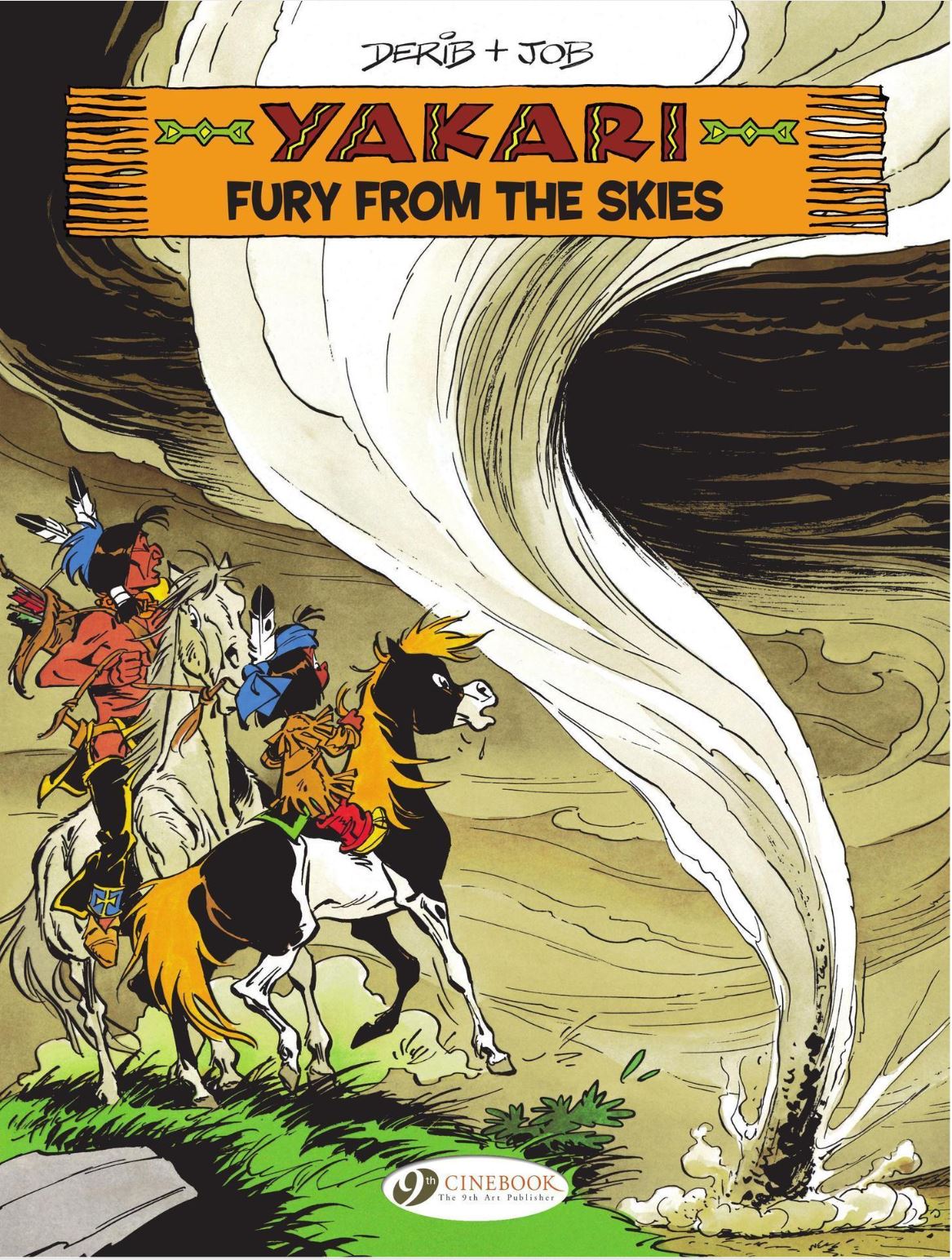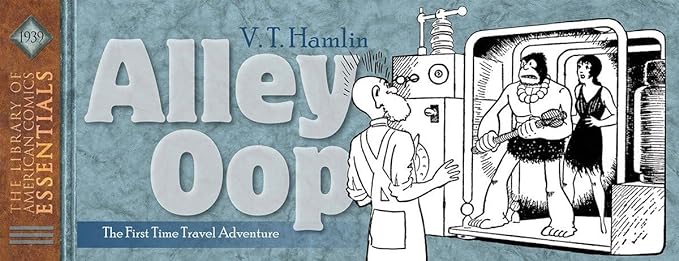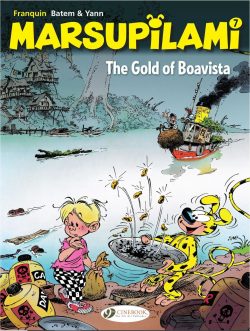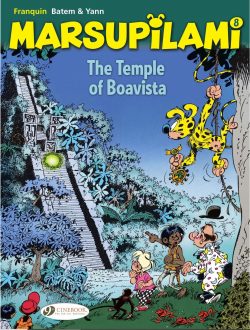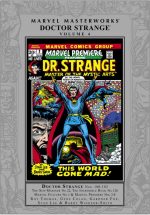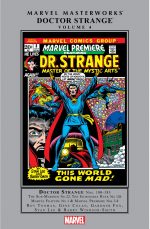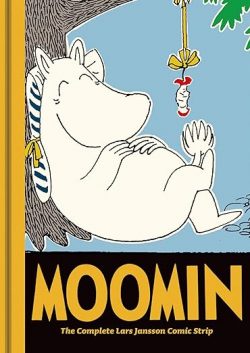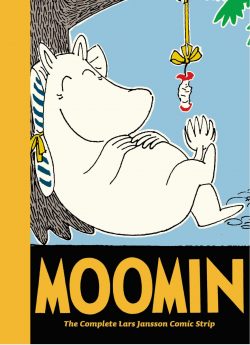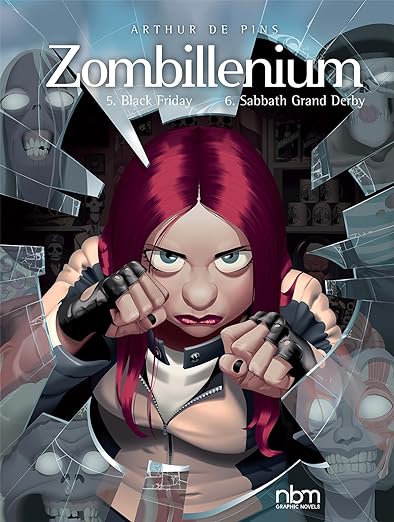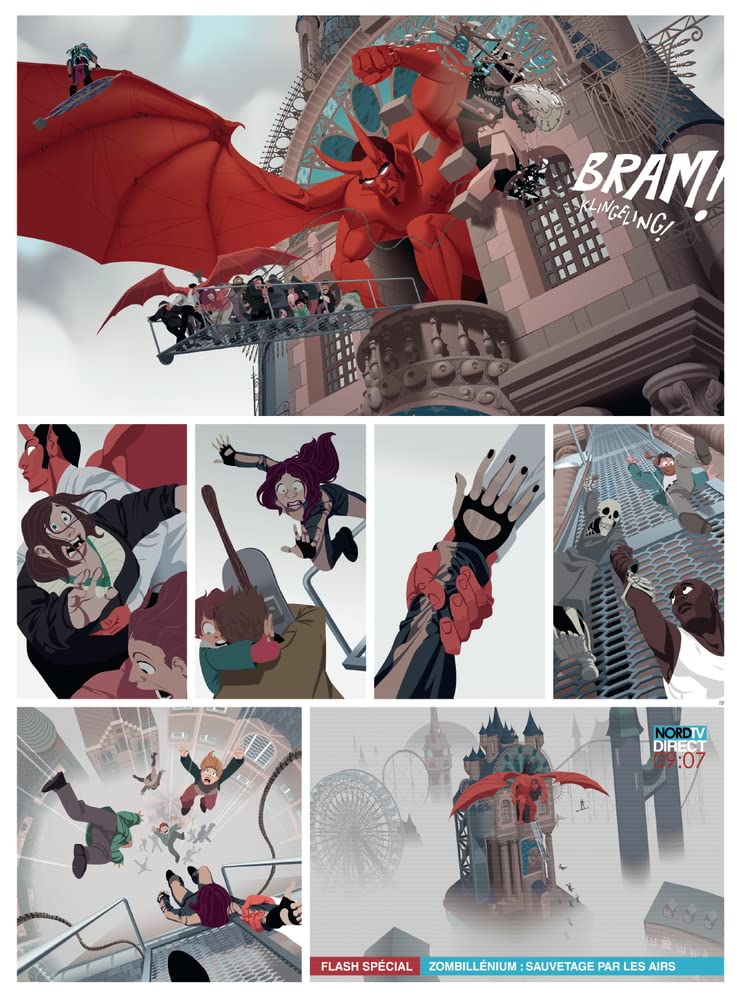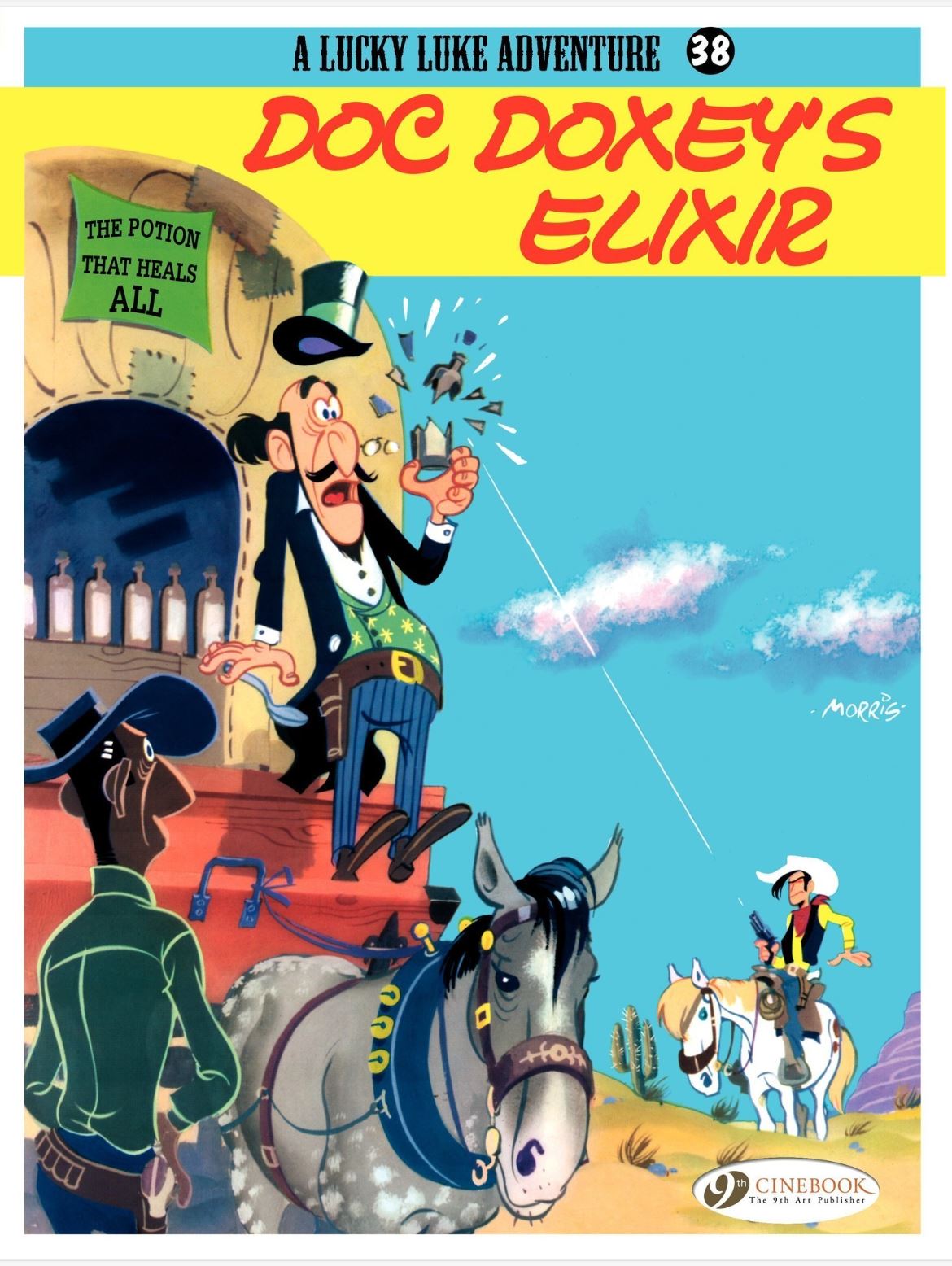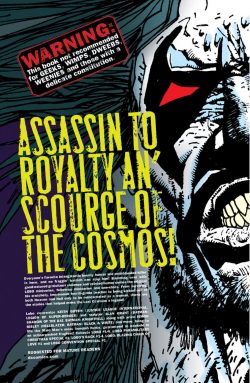
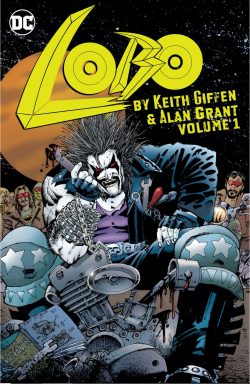
By Keith Giffen & Alan Grant with Simon Bisley, Christian Alamy, Denys Cowan, Kevin O’Neill & various (DC Comics)
ISBN: 978-1-4012-7477-1 (TPB/Digital edition)
Win’s Christmas Gift Recommendation: ’Tis the Season To Be Fragged… 8/10
Lobo is an incredibly powerful, inescapably violent, perpetually drunken thug afflicted with a love of space dolphins, an utter disregard for all other life and an unshakable moral code hard for anyone else to grasp. The obnoxious, overbearing, unsanitary intergalactic bounty hunter was first seen in Omega Men #3, cover-dated June 1983. He then cropped up all over the DC universe, even becoming a mainstay of the popular L.E.G.I.O.N. series: indentured by cunning stunt as a (sort of) peacekeeper to the intergalactic commercial police force run by Vril Dox, “son” of one multiversal iteration of cosmic super-villain Brainiac.
He had his own monthly title for a few years as well as multiple miniseries and specials, and was a popular candidate for inter and cross-company team-ups. He’s even been a repeat offender on screen in both live action and animated iterations. In-world, the name Lobo roughly translates as “he who devours your entrails and enjoys it”. Despite being pretty much a one trick pony and increasingly an exercise in outrageous graphic excess, this unstoppable, anarchic force-of-nature exploded in popularity in the decade following debut. He was exactly what many fans wanted.
This collection reprints Lobo #1-4; The Lobo Paramilitary Christmas Special; Lobo’s Back #1-4; Lobo: Blazing Chain of Love; Lobo Convention Special and material from Who’s Who in the DC Universe, collectively spanning all of infinity via cover-dates November 1990 to September 1993.
Without any kind of fair warning, this bloodbath of poor taste and shocking excess opens with initial Limited Series Lobo #1-4: ‘The Last Czarnian’. The skeevy brute always prided himself on being the final survivor of his planet, but here finds to his horror and disgust that he missed someone when he slaughtered his entire race. That lucky survivor is his old fourth grade teacher Miss Tribb, who has unbelievably and unwisely written an unauthorized tell-all biography of “the Main Man” who was her least favourite pupil ever…
Forbidden by his own honour-code from killing her, he must instead escort the snippy snarky old baggage to Dox at L.E.G.I.O.N. HQ with every nut-job in the universe pursuing them, hell-bent on killing one or other or preferably both of them. Subdivided into ‘Part One: Portrait of a Psychopath’, ‘Part Two: Lord of the Dance’, ‘Part Three: Spell or Die’ and ‘Part Four: The Last Last Czarnian’, this blistering bonkers baroque barbarity is plotted and laid out by Giffen, scripted by Grant and outrageously limned by hip headbanger Simon Bisley as colourist; Lovern Kindzierski and letterer Todd Klein aid and abet the cartoon carnage. As usual, despite all the forces ranged against him, The Main Man has the last – albeit misspelled – word…
The Lobo Paramilitary Christmas Special (January 1992) follows with Giffen, Grant, Bisley, Kindzierski and Gaspar Saldino expediting ‘The Lobo Xmas Sanction’ as cash-strapped parents of far-too-many brats look to save on end of year expenses and learn how a certain unsavoury soul and his dog Dawg were hired by The Easter Bunny to take out his biggest rival in the holiday icon game: Santa Claus. The elves were no real problem but old man Kringle was a harder nut to crack and left a surprise Lobo never anticipated…
Beginning in May 1992, and coloured by Danny Vozzo, Lobo’s Back #1-4 comprised ‘The Final Fragdown’, ‘Heaven is… a 4-Letter Word’, ‘If the Jackboot Fits…!’ and ‘The War in Heaven’ then details his return to the private sector after L.E.G.I.O.N. implodes and how he dies trying to bring in the infamous Loo, the most dangerous being in the universe.
What follows is an outrageous, darkly hilarious, blood-soaked spin on a venerable old tale (you’ve probably seen the Bugs Bunny cartoon classic) as Lobo makes himself persona non grata in every aspect of the afterlife. When both Heaven and Hell discover that the Main Man is too much to handle, there’s only one place to go and that’s back here, but nobody said it had to be in his original body…
Fans and the spiritually attuned will want to see what this creative team does with comic guest stars loke The Demon and General Glory and a host of pantheons and holy folk of all denominations…
Behind a cover by Dan Brereton, Lobo: Blazing Chain of Love sees artist Denys Cowan, colourist Noelle Giddings and letterer “Tanya” Klein join Giffen & Grant to explore the Main Man’s other main interest, only to encounter a forced shortage of willing babes of negotiable affection…
You’d think that’s the kind of problem relentless remorseless violence couldn’t fix. You’d be wrong…
This yarn will confound all your expectations as it is in fact a potent, brilliantly-conceived argument for safe sex crafted at the height of the fightback against HIV/AIDS, leading directly into our final furious foray… against Comics fandom itself…
The Lobo Convention Special – with the much-missed Kev O’Neill delivering another inimitable illustration masterclass, and Digital Chameleon adding hues to the queues at ‘Lobo-Con’ – is blackly comedic, ironic, sardonic and manic, as it depicts and cruelly deconstructs the people it depends upon. After skewering the great, good and especially unwashed of the industry, it all ends in carnage but begins with Lobo looking to replace his copy of the Death of Superman and heading to a convention packed with the kind of fanboys we’re all absolutely certain are FAR WORSE than we are…
The carnage concludes with info pages from Who’s Who in the DC Universe…
At the height of his popularity the Main Man of Mayhem was a publisher’s dream. There was actual baying from fans and speculators for more product and a largely new and receptive audience which hadn’t seen the unleashed potential of grown up comics. These tales for (im)Mature readers aren’t to everybody’s taste, but Giffen & Grant’s wickedly sharp scripts gave Bisley (assisted by Christian Alamy) and later artists scope for breathtakingly memorable art sequences, and sometimes just going wild is as rewarding as the most intricately balanced craftwork and plot-building.
All that being said, if you’re in the right mood, his kind of gratuitous mayhem can be wonderfully entertaining and has much to recommend it if vicious, sardonic slapstick pushes your buttons. Comics excess at its finest.
© 1990, 1991, 1992, 1993, 2018 DC Comics. All Rights Reserved.

